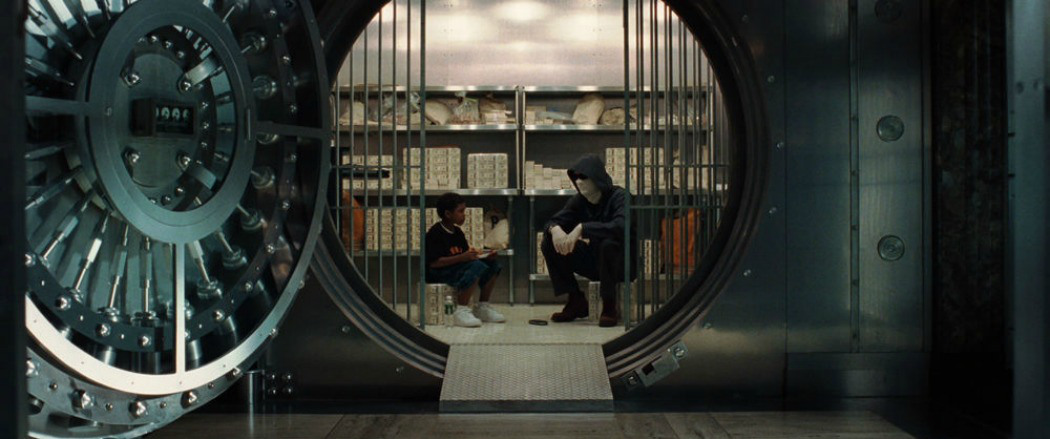One thing I will praise Rebel Moon for is that it is unambiguously a movie made by Zack Snyder, and love or hate the man, you gotta admit he's got a style to him. Imitating the visual palette of his usual collaborator Larry Fong (who is sorely missed whenever Snyder isn't working with him), Rebel Moon Part Two is full of striking imagery and creative setpieces. Superheated blades rip through armor in flashes of orange sparks and blue flourishes. An army marches through smoke and mist, more of its numbers revealed in every step. Gryphon-riding knights battle gunships atop the rooftops of an ancient palace. It's a film from a man fed off a visual palette of sci-fi and epic fantasy, a veritable blend of influences from Conan the Barbarian to Warhammer 40K.
Of course, in terms of influence, it's hard to discuss this film without talking about its origins as a pitch for a Seven Samurai-inspired take on Star Wars that subsequently fell to the wayside, a victim of the Disney buyout of Lucasfilm. Whether this would've really fit with the Disney plans for the universe is hard to say, but given Snyder's fallout with Warner Bros., perhaps it's for the best that he be allowed to operate on his own merit.
The DNA of Star Wars is all over this, but it's to the credit of Rebel Moon that it doesn't feel like a serial numbers-filed-off rebrand. It leans into a grimmer, more fantastical style of costumes and production value design, evoking something closer to David Lynch's Dune than anything Lucas created. The action, however, is pure, uncut Snyder, full of that classic slow-mo and loving depictions of the human form that he's so known for. While it's absolutely indulgent (there is a ten-minute wheat gathering scene that had me in absolute stitches as it kept cutting back to it), it's often delightfully over-the-top, with the film's final hour being occupied entirely by the battle for the village. It's a battle with real weight where anyone can die, a completely relentless scrap that just keeps escalating. Gunships, massive tanks, lightsaber duels, all culminating in a kinetic brawl down a collapsing hangar between former soldier Kora (Sofia Boutella) and vengeful cybernetic admiral Atticus (Ed Skrein). When the film hits its stride, it hits hard.
The issue, unfortunately, lies in getting there. While Part Two is much brisker than the first and actually takes the time to develop its characters rather than simply introducing them and then pushing them to the background, the cast still never quite feel as cohesive or fleshed out as they need to be for the stakes of this to work. Much of the depth is left to the (admittedly quite strong) ensemble, with Djimon Hounsou's mournful General Titus and Sofia Boutella as particular favorites of the bunch, grasping at a level of emotional complexity that the script doesn't quite have. It's hardly film-breaking to the level of some recent genre fare, but it's harder to escape the style over substance feel of much of Snyder's work.
Ultimately, if you don't like Snyder, I doubt this will do much to convince you. But for the superfans, or those like me for whom Snyder is something of a guilty pleasure, there's a lot to like here. But hey, an Anthony Hopkins-voiced robot climbs inside of a spider-mech and wipes out a squad of space Nazis, so it's definitely not nothing.




